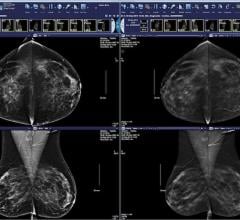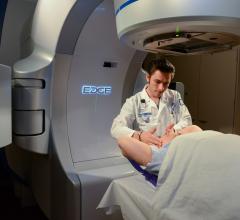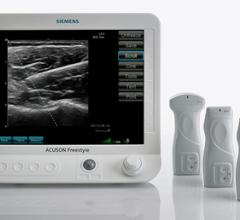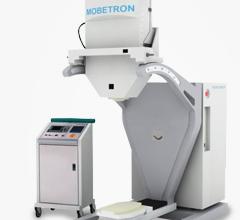A new survey entitled "Diagnosis Anxiety: The Working Mother Breast Screening Report" sheds important new information on the level of awareness women have about breast cancer today and what they are doing to help reduce the disease or detect it early.
Colorado cancer researchers and medical doctors on announced they are launching a $200,000 feasibility study as a key step to building the nation’s first carbon-ion radiotherapy research and treatment facility in Aurora, where they and colleagues hope to investigate and provide to patients leading-edge radiation therapy that is effective against the deadliest cancers and now is available only in Europe and Japan.
The RSNA FastPass is produced by Imaging Technology News (ITN), and is designed as a guide to showcase the products and technology that vendors are highlighting at the show. Use it as a tool to better navigate the vast technical exhibit floor and find what you are looking for. The RSNA microsite can be found at www.itnonline.com/rsna-fastpass.
Radiology departments have many different needs and face a wide variety of challenges that can impact their departments ...
Scientists at the Food and Drug Administration (FDA) are studying the next generation of screening and diagnostic devices, some of which borrow from the world of entertainment. Soon, three-dimensional images in actual 3-D might help your doctor find hidden tumors and better diagnose cancers, thanks to the regulatory work being done by a team at FDA’s Division of Imaging, Diagnostics, and Software Reliability.
An editorial published in the Journal of the American Medical Association (Woolf et al) this week suggesting against Medicare coverage of computed tomography (CT) screening in seniors at high risk for lung cancer ignores available evidence, relies on unsubstantiated or ambiguous claims, and fails to accurately portray the current state of CT lung cancer screening, according to the American College of Radiology and the Lung Cancer Alliance.
October 14, 2014 — McKesson Radiology Mammography Plus version 2.0 offers users unrestricted access to multimodality breast imaging with all the advantages of a robust picture archiving and communications system (PACS).
Despite decades of progress in breast imaging, one challenge continues to test even the most skilled radiologists ...
October 14, 2014 — PenRad Technologies Inc. announced its partnership with Clinithink to refine the process of clinical documentation for radiologists in real time. PenRad is embedding Clinithink’s CLiX CNLP (clinical natural language processing) platform into its MIS (mammography information system) solution to increase productivity, accuracy and efficiency of the mammography reporting workflow for its existing install base.
Although the highly saturated picture archiving and communication systems (PACS) segment is slowing growth in the U.S. imaging informatics market, a few niche areas are advancing forming new growth areas.
The U.S. Food and Drug Administration (FDA) approved Lumason (sulfur hexafluoride lipid microsphere) for patients whose ultrasound image of the heart (echocardiograms) are hard to see with ultrasound waves.
Bayer Radiology’s Barbara Ruhland and Thom Kinst discuss how radiology departments can address the many different ...
A magnetic resonance imaging (MRI) technique can detect signs of cognitive decline in the brain even before symptoms appear, according to a new study published online in the journal Radiology.
A new stereotactic radiosurgery system provides the same or a higher level of accuracy in targeting cancer tumors — but offers greater comfort to patients and the ability to treat multiple tumors at once — when compared to other radiation therapy stereotactic systems, according to researchers at Henry Ford Hospital in Detroit.
Kubtec, a developer of digital specimen radiography systems, marks the start of Breast Cancer Awareness Month with the U.S. FDA approved, Mozart with TomoSpec, the only breast specimen radiography system with tomosynthesis technology. In providing the most comprehensive analysis of excised breast tissue in a specimen radiography system, Mozart can help reduce re-excision and patient call back rates.
eHealth Saskatchewan plays a vital role in providing IT services to patients, health care providers, and partners such ...
McKesson Clinical Data Exchange is a standards-based solution that helps manage, share, and access images and clinical documents within a single facility, within an enterprise, or across a region. Available independently of McKesson Radiology PACS (picture archive and communications system) and McKesson Enterprise Image Repository, this solution supports a modular or enterprise deployment model to offer a single view of the patient’s longitudinal record from any common Web-enabled mobile device or workstation.
Invivo has expanded its breast and prostate imaging solutions portfolio with the addition of the Sentinelle product line of advanced MRI coils.
A report released by the Department of Health and Human Services projects that hospitals will save $5.7 billion this year in uncompensated care costs because of the Affordable Care Act, with states that have expanded Medicaid seeing about 74 percent of the total savings nationally compared to states that have not expanded Medicaid.
Siemens Healthcare has introduced Release 3.5 of the Acuson Freestyle ultrasound system — the world’s first ultrasound system with wireless transducers — to enhance clinical and operational efficiencies at the point of care.
Catherine Philippson, M.D., of the Jules Bordet Institute, Brussels presented her institution’s experience treating 425 early stage breast cancer patients from February 2010 through February 2014 using Mobetron to deliver intraoperative electron beam radiotherapy (IOERT) as the sole radiation treatment with no post-operative radiotherapy to follow.
“Once patients have survived cancer, they don't die from cancer, they die from heart disease. Cardio-oncology is about making sure that doesn't happen," said Juan Carlos Plana, M.D.
Informity is the fastest, most complete automated cloud backup and disaster recovery solution for the ImagePilot Sigma and ImagePilot Aero systems. It protects patient data, ensures data recovery in the event of a disaster or other system failure, and helps facilities fulfill HIPAA’s security compliance as required by federal law. Developed for practices and clinics that do not have a picture archive and communications system (PACS) or other disaster recovery solution, Informity uses cloud-based technology to automatically and continuously back up patient information, images, and system settings on the ImagePilot Sigma and ImagePilot Aero. It assures business continuance with a one-button restore of the entire system.
October 13, 2014 — Three out of four people are not aware that dense breast tissue increases a woman’s risk of developing breast cancer, according to a new global study from GE Healthcare exploring perspectives on breast cancer with an emphasis on understanding awareness around dense breast tissue and the most common symptoms of breast cancer. The “Value of Knowing” global survey of 10,000 adults across 10 countries highlighted a significant lack of awareness about the breast cancer risk associated with having dense breast tissue. Women with dense breast tissue have four to five times higher risk of developing breast cancer, yet only one out of five people globally has seen, heard, or read about dense breast tissue in the last six months. Further, less than half of adults are confident in naming some of the most common signs and symptoms of breast cancer.

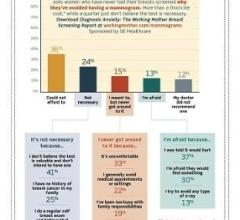
 October 15, 2014
October 15, 2014 




